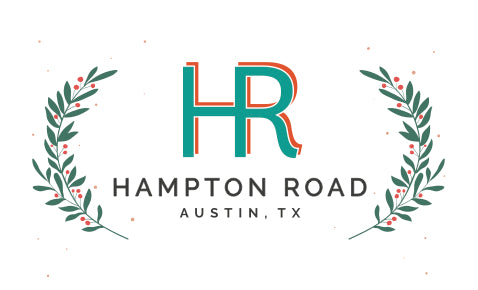When I started Hampton Road Designs three years ago, my vision was to make the best and most beautiful clear bag at a fair price point. At that point in time, I had no idea how the brand would evolve. What I did know is that I loved textiles, patterns, and color. As Hampton Road Designs began to grow as a company, I began to grapple with issues common to lots of small brands. How can I control costs and quality on an ever-tightening budget? How can I deliver a diverse range of products that reflect my love of textiles, patterns, and color?
The answer came to me as many ideas do: in my dreams. One night, I had a very vivid dream of Hermès scarves waiving in front of my eyes. They would get bigger and smaller, and as though through a zoom lens, my view would focus in on details and “sub-plots” and then scale backwards to see the full scarf. I was inspired, so I woke up Bruce. I said, “Hey, have you ever seen a Hermès scarf?” Sleepily, he said, “go back to bed.” I pressed on, and eventually he woke up enough to hear my dream. He got inspired, too. We talked until the sun came up about how to turn a scarf into a bag that gave tribute to the incredible artistry of each scarf.
The proverbial lightbulb went off in my head. I went to the wardrobe where I store all my handbags and pulled out a little cotton clutch I bought at Anthropologie about 12 years ago. It had a very bohemian pattern in bright yellow with big pom-pons dangling from it. I showed it to Bruce and he immediately understood (he’s good that way). Next thing we knew, we were in the scarf business.
So, the scarf business is a whole thing. Buying scarves is tricky. In addition to learning the markers of authenticity and finding reputable brokers, you have to see a scarf as a whole and in pieces. You need to know the “feel” of authenticity and the “vibrancy” of the colors. The colors and patterns must make sense not just as a whole, but also on a smaller scale. It is kind of like breaking a book into chapters. Scarf Editing, 101. After a bit of trial and error, we got good enough to find a manufacturer. We lucked out when we met with Calley Rivera at Sew Studio San Antonio. She approaches her business with the attention to detail and process she learnedin the Air Force. However, she is also an artist who knows her materials. She put Bruce and I through Silk Selection 101 and Advanced Pattern Cutting.
To put a finer point on what Calley taught us, you have to use very specific types of silk, interfacing, stitching, and cutting to give each bag the structure it needs to function as a bag. After several trial runs, we finally landed on a design that gives due respect to the design on the scarf without overdesigning the bag itself (the simple box pleat). In the case of a silk scarf bag, the magic is in achieving the effect of minimal design with a lot of thoughtful engineering taking place behind the scenes (kind of like a Volvo).
From a process perspective, Bruce and I do all the patterns and cutting from our studio (e.g., our dining room table). To be fair, Bruce does the cutting – I’m scared I’ll mess up. Then, we select a complimentary color for the interior. Selecting the interior is one of my favorite parts of the process. The scarves come to life in a whole new way when paired with the lining. Once we have everything cut and ready, we drive downtown to Calley’s Sew Studio so she and her team can do their magic. The whole process takes about a month from selection to inspection to cutting to finished product. Our happiest days are the days we pick up finished products from Calley. They unveiling never gets old.
We continue to learn and iterate, as all designers do. We’d love to hear what you think about our Party Clutches.

















